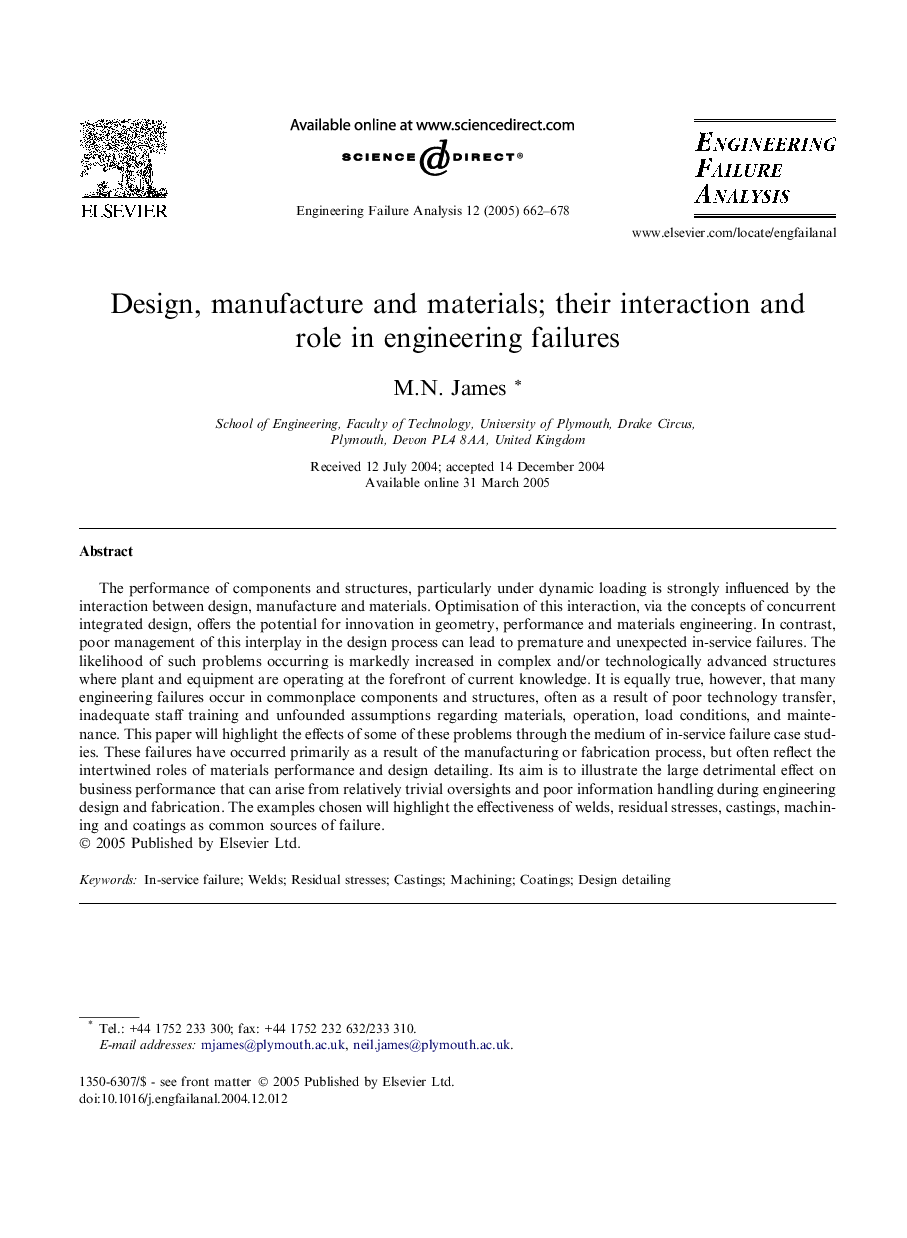| Article ID | Journal | Published Year | Pages | File Type |
|---|---|---|---|---|
| 10415434 | Engineering Failure Analysis | 2005 | 17 Pages |
Abstract
The performance of components and structures, particularly under dynamic loading is strongly influenced by the interaction between design, manufacture and materials. Optimisation of this interaction, via the concepts of concurrent integrated design, offers the potential for innovation in geometry, performance and materials engineering. In contrast, poor management of this interplay in the design process can lead to premature and unexpected in-service failures. The likelihood of such problems occurring is markedly increased in complex and/or technologically advanced structures where plant and equipment are operating at the forefront of current knowledge. It is equally true, however, that many engineering failures occur in commonplace components and structures, often as a result of poor technology transfer, inadequate staff training and unfounded assumptions regarding materials, operation, load conditions, and maintenance. This paper will highlight the effects of some of these problems through the medium of in-service failure case studies. These failures have occurred primarily as a result of the manufacturing or fabrication process, but often reflect the intertwined roles of materials performance and design detailing. Its aim is to illustrate the large detrimental effect on business performance that can arise from relatively trivial oversights and poor information handling during engineering design and fabrication. The examples chosen will highlight the effectiveness of welds, residual stresses, castings, machining and coatings as common sources of failure.
Related Topics
Physical Sciences and Engineering
Engineering
Industrial and Manufacturing Engineering
Authors
M.N. James,
